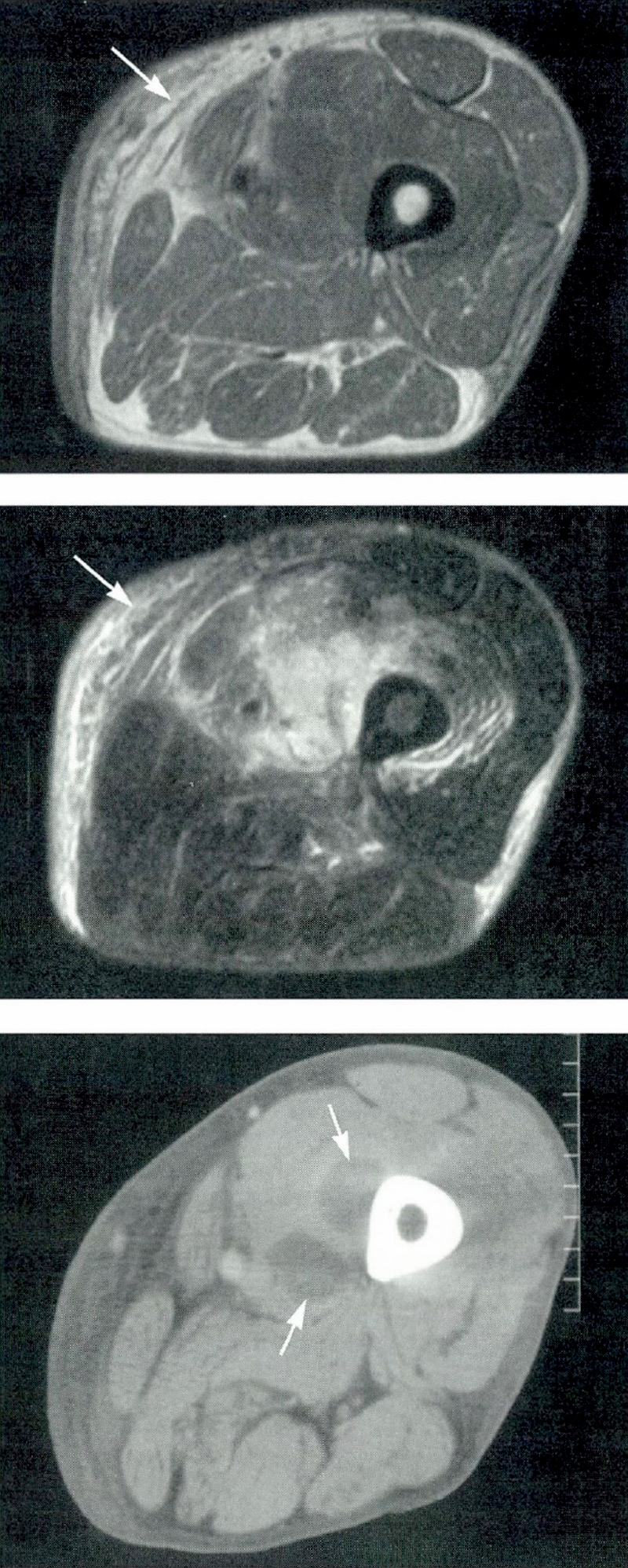Pyomyositis is a bacterial infection that can cause an abscess in your muscles, most commonly, your thigh muscles. The bacteria Staphylococcus aureus (a staph infection) is the most common cause. Symptoms include pain, swelling and fever. Providers treat pyomyositis with antibiotics.
Advertisement
Cleveland Clinic is a non-profit academic medical center. Advertising on our site helps support our mission. We do not endorse non-Cleveland Clinic products or services. Policy

Pyomyositis (“pi-oh-my-oh-SIGH-tis") is a rare bacterial infection in your muscles. It causes an abscess — a swollen, pus-filled area — to form. Pyomyositis most commonly affects muscles in your lower body, like your thigh or pelvic muscles.
Advertisement
Cleveland Clinic is a non-profit academic medical center. Advertising on our site helps support our mission. We do not endorse non-Cleveland Clinic products or services. Policy
Since the abscess is deep in your muscle, you usually can’t see it just by looking at your body. It might cause pain or, eventually, swelling or a hard lump you can feel through your skin. You might have a hard time using the affected muscle like you normally would. For example, if you have an abscess in your thigh muscle, you might develop a limp.
Symptoms include:
Healthcare providers determine what stage of pyomyositis you have based on how severe or widespread the infection is.
The bacteria Staphylococcus aureus (a staph infection) causes most cases of pyomyositis. Group A Streptococcus can also cause it. Experts aren’t sure exactly how these bacteria get into your muscles to cause pyomyositis— you don’t seem to need a break in your skin to get an infection.
Advertisement
Pyomyositis is more common in tropical areas of the world, but you can get it no matter where you live. You might be at a higher risk if you have:
If left untreated, the bacterial infection that causes pyomyositis can spread throughout your body. This can lead to septic shock, organ damage and death.
Healthcare providers use an MRI — images of the inside of your body — to diagnose pyomyositis. They might also use blood tests or a bacterial culture to look for an infection.
It can be hard for providers to diagnose because its symptoms often look like other, more common issues. Depending on your symptoms, they may do additional tests or imaging while determining the cause.
Providers treat pyomyositis with antibiotics. They also may need to drain the abscess. In severe cases, you might need surgery to completely get rid of the infection.
Contact a healthcare provider if you have an unexplained fever or muscle pain that doesn’t go away. Let them know if you’ve had any recent injuries or if you have any risk factors for pyomyositis.
When caught in stages 1 or 2, pyomyositis is often treatable with antibiotics. You’ll get them through an IV in your arm or take them by mouth for at least a week. You might need more extensive treatment if the infection has spread to the rest of your body. Pyomyositis can be fatal without treatment
Myositis is muscle inflammation that can have many causes. An infection causes pyomyositis, specifically.
Pyomyositis is a rare muscle infection. But it can be serious if left untreated for too long. Be sure to talk to a healthcare provider if you have any unexplained muscle pain, especially if it’s getting worse or you have other symptoms, like swelling. Many common conditions can have similar symptoms to pyomyositis, so it might take time to get to the bottom of it. It can be frustrating when it takes a long time to figure out the cause of your symptoms. Pyomyositis is often curable once diagnosed.
Advertisement
Need care fast? Cleveland Clinic’s Express Care and Urgent Care locations treat everything from sprains to sinus infections — no appointment needed.

Last reviewed on 05/16/2025.
Learn more about the Health Library and our editorial process.